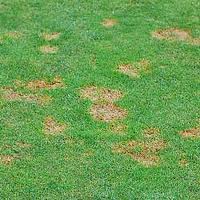As spring is approaching there are a few things you should keep in mind when it comes to lawn care; here are a couple tips that can help you to ensure your landscape is ready for this season!
When is the best time to prune flowering shrubs?
Pruning is a regular, important part of keeping your flowering plants healthy, contained and looking their best. The right time depends on when the flowers appear.
 Plants that bloom in early spring on old wood (or growth from the previous season) should be pruned a week or two after flowers drop. Those that bloom in late summer on stem growth from the current growing season shouldn’t be pruned until they’re dormant.
Plants that bloom in early spring on old wood (or growth from the previous season) should be pruned a week or two after flowers drop. Those that bloom in late summer on stem growth from the current growing season shouldn’t be pruned until they’re dormant.
It’s good to keep after your shrubs, because pruning removes diseased and damaged plant parts, helps air circulate and sunlight get in, and stops structural problems in future plant growth. Flowering plants, in particular, pro- duce more flowers and fruit when pruned at the right time.
What should I do about lawn disease?
Fungus disease organisms travel by foot, water and air, and every lawn has them. They tend to thrive especially well in the cool, moist conditions of spring.
While fungicides are available for suppressing lawn diseases, they aren’t a permanent  solution. The best way to ward off and reduce these diseases is to keep your lawn healthy and growing. Even if you have a variety of fungus diseases present in your lawn, those diseases will have a lot more trouble infecting your turf if it’s strong, well-fed and unstressed. Here are a few easy ways to keep many fungus varieties under control:
solution. The best way to ward off and reduce these diseases is to keep your lawn healthy and growing. Even if you have a variety of fungus diseases present in your lawn, those diseases will have a lot more trouble infecting your turf if it’s strong, well-fed and unstressed. Here are a few easy ways to keep many fungus varieties under control:
Control watering. Most fungus spores spread in water, so water less often and more deeply – during the warmer times of the day when your lawn can dry more quickly.
Fertilize regularly. Scheduled fertilizer applications throughout the season encourage steady growth, discouraging unhealthy growth spurts that can invite disease.
Mow with sharp blades. Dull mower blades shred grass blades, leaving open wounds through which fungus spores can enter.
Aerate. Aerating breaks up the thatch layer, a natural breeding ground for fungus spores.


